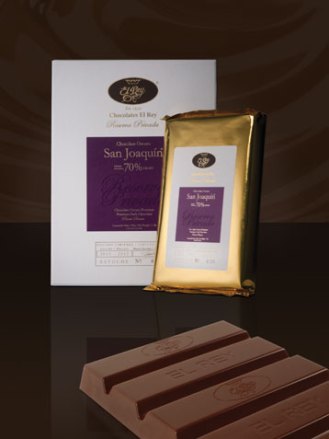
If you visit the El Rey factory in Barquisimeto everyone will tell you that the secret to the company’s success is in the relentless and uncompromising pursuit of quality. The term quality in and of itself might seem a bit broad, but at El Rey we have refined it to a science. Our people on the production line will tell you that to make quality chocolate, one needs to focus on so much more than just the making of the chocolate. In the plant, selecting the beans by size, roasting, refining, tempering, molding and packaging are all critical steps of the process. However, long before the cacao beans arrive at the factory the focus needs to be on fermentation, drying, storage and transport of the beans. Each of these steps set the stage for the making of a premium product.
Most chocolate manufactures import their cacao from producing countries and thus don’t have the monitoring capability of making sure their producers use proper post-harvest processes. True chocolate flavor originates on the farm.
Cacao beans don’t undergo fermentation by themselves. The pulp that surrounds the beans is a key element to the fermentation and it is what in the end projects the flavor and aroma of the bean. Many cacao producers will scoop out the beans from the pod, separating them from the placenta, then immediately place the beans to dry. The proper process consists of placing the pulp covered beans in fermentation bins and progressively stir or mix them over a period of several days. Fermentation initiates when natural sugars are converted into alcohols, the alcohols are then converted into acids and finally the acids are dissipated into the atmosphere. The total fermenting time required depends on the type of bean. The Forester bean usually requires anywhere from 5 to 7 days while the Criollo bean only 1 to 3 days.
Once the beans have been properly fer mented, they are then laid out evenly and set to dry in the sun. Sun drying essentially allows enough time for the curing of the beans. Once the moisture in the beans is measured at less than 1%, they are considered properly dried. They should then be stored in dry areas to prevent the creation of mold.
mented, they are then laid out evenly and set to dry in the sun. Sun drying essentially allows enough time for the curing of the beans. Once the moisture in the beans is measured at less than 1%, they are considered properly dried. They should then be stored in dry areas to prevent the creation of mold.
A bean that has not been fermented properly will not have the usual color characteristics and the fruity acidic flavor associated with cacao. Worst yet is a cacao bean that has not been dried or stored properly. The presence of moisture is a factor that can increase the cacao beans susceptibility to mold, and if this remains unchecked, can wipe out much the flavor and aromatic characteristics achieved during a proper fermentation. For this reason, Chocolates El Rey long ago decided to monitor its raw material from origin all the way through up until the finished product.
We understand that great chocolate originates in the bean. Our agricultural engineers assist small medium and large cacao growers all over Venezuela. They habitually provide workshops that teach new, up and coming farmers how to manage the soil in a sustainable system promoting natural cycles without chemical pesticides or fertilizers. We also monitor and provide support to our growers with proper fermenting and drying methods. At El Rey, we see our cacao growers as partners in our chocolate production process. That is why we pay above international market prices for our beans, in efforts to motivate others to produce higher yields as well as better quality cacao. What sets us apart from other chocolate companies is that we don’t exclusively see ourselves as chocolate manufacturers but rather as a company focused on being a world class agribusiness.
 San Joaquín Private Reserve
San Joaquín Private Reserve


